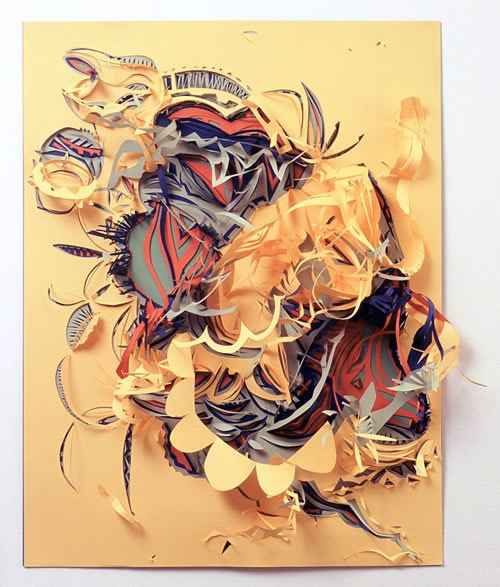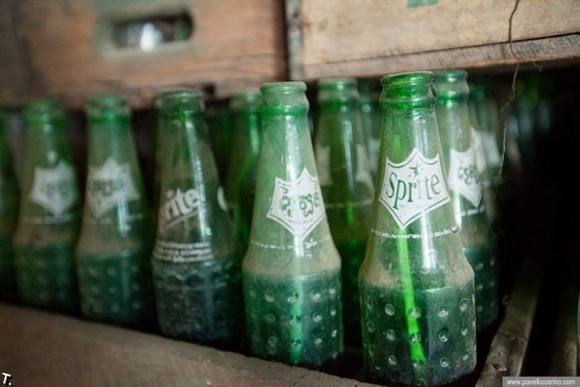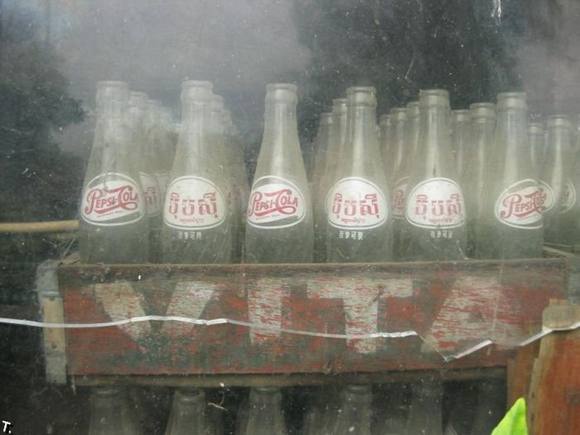Photography
Beautiful Paper Cutting Art
Photography
Christmas on Facebook
You are here: Home / Photography / Christmas on Facebook
Christmas on Facebook
Today, as it happens every year around this time, I saw the first Christmas tree decorating the window of a store downtown. Although the first Christmas tree has always been special (enough to write an article), any other tree will either have to be mine or just plain humungous to have a similar impact. That may be a bit unfair.
With so many trees and lights deserving but not getting our attention, I thought, maybe it is time to put my Christmas decoration efforts elsewhere this year. Since my Facebook profile gets a lot more visitors than my own home (I hope), I decided to make my Facebook page look as Christmassy as it can in its tired blue Facebook colors.
My first thought was to add a Christmas tree as the Facebook cover photo. Should be easy enough, but not very creative. Then I ran into a weird website called Foob that allowed me to customize a Christmas Facebook cover with my own photo! Cool, I thought – it would be even better if I could add my own quote somewhere. The website doesn’t seem to have a large stock of cover templates but there is enough for my Christmas needs, and I give it A+ for taste and culture. Let me know what you think.

Photography
Airbus A380 airline Emirates
You are here: Home / Photography / Airbus A380 airline Emirates
Airbus A380 airline Emirates
The Airbus A380 is a double-deck, wide-body, four-engine airliner manufactured by the European corporation Airbus, a subsidiary of EADS. The largest passenger airliner in the world, the A380 made its maiden flight on 27 April 2005 from Toulouse, France, and made its first commercial flight on 25 October 2007 from Singapore to Sydney with Singapore Airlines. The aircraft was known as the Airbus A3XX during much of its development phase, but the nickname Superjumbo has since become associated with it.
The A380’s upper deck extends along the entire length of the fuselage, and its width is equivalent to that of a widebody aircraft. This allows for a cabin with 50% more floor space than the next-largest airliner, the Boeing 747-400, and provides seating for 525 people in a typical three-class configuration or up to 853 people in all-economy class configurations. The postponed freighter version, the A380-800F, is offered as one of the largest freight aircraft, with a payload capacity exceeded only by the Antonov An-225. The A380-800 has a design range of 15,200Â km (8,200Â nmi), sufficient to fly from New York to Hong Kong for example, and a cruising speed of Mach 0.85 (about 900Â km/h or 560Â mph at cruising altitude).

In the summer of 1988, a group of Airbus engineers led by Jean Roeder began working in secret on the development of a ultra-high-capacity airliner (UHCA), both to complete its own range of products and to break the dominance that Boeing had enjoyed in this market segment since the early 1970s with its 747. McDonnell Douglas unsuccessfully offered its smaller, double-deck MD-12 concept for sale. Roeder was given approval for further evaluations of the UHCA after a formal presentation to the President and CEO in June 1990. The project was announced at the 1990 Farnborough Air Show, with the stated goal of 15% lower operating costs than the 747-400. Airbus organized four teams of designers, one from each of its EADS partners (Aérospatiale, DaimlerChrysler Aerospace, British Aerospace, EADS CASA) to propose new technologies for its future aircraft designs. The designs would be presented in 1992 and the most competitive designs would be used

In January 1993, Boeing and several companies in the Airbus consortium started a joint feasibility study of an aircraft known as the Very Large Commercial Transport (VLCT), aiming to form a partnership to share the limited market. This study was abandoned two years later, Boeing’s interest having decreased.

In June 1994, Airbus began developing its own very large airliner, designated the A3XX. Airbus considered several designs, including an odd side-by-side combination of two fuselages from the A340, which was Airbus’s largest jet at the time. The A3XX was pitted against the VLCT study and Boeing’s own New Large Aircraft successor to the 747. From 1997 to 2000, as the East Asian financial crisis darkened the market outlook, Airbus refined its design, targeting a 15 to 20 percent reduction in operating costs over the existing Boeing 747-400. The A3XX design converged on a double-decker layout that provided more passenger volume than a traditional single-deck design

On 19 December 2000, the supervisory board of newly restructured Airbus voted to launch a €8.8-billion programme to build the A3XX, re-christened as the A380, with 50 firm orders from six launch customers. The A380 designation was a break from previous Airbus families, which had progressed sequentially from A300 to A340. It was chosen because the number 8 resembles the double-deck cross section, and is a lucky number in some Asian countries where the aircraft was being marketed. The aircraft’s configuration was finalised in early 2001, and manufacturing of the first A380 wing box component started on 23 January 2002. The development cost of the A380 had grown to €11 billion when the first aircraft was completed.

Major structural sections of the A380 are built in France, Germany, Spain, and the United Kingdom. Due to their size, they are brought to the assembly hall in Toulouse in France by surface transportation, though some parts are moved by the A300-600ST Beluga aircraft used in the construction of other Airbus models. Components of the A380 are provided by suppliers from around the world; the five largest contributors, by value, are Rolls-Royce, SAFRAN, United Technologies, General Electric, and Goodrich.

The front and rear sections of the fuselage are loaded on an Airbus Roll-on/roll-off (RORO) ship, Ville de Bordeaux, in Hamburg in northern Germany, from where they are shipped to the United Kingdom. The wings, which are manufactured at Filton in Bristol and Broughton in North Wales, are transported by barge to Mostyn docks, where the ship adds them to its cargo. In Saint-Nazaire in western France, the ship trades the fuselage sections from Hamburg for larger, assembled sections, some of which include the nose. The ship unloads in Bordeaux. Afterwards, the ship picks up the belly and tail sections by Construcciones Aeronáuticas SA in Cádiz in southern Spain, and delivers them to Bordeaux. From there, the A380 parts are transported by barge to Langon, and by oversize road convoys to the assembly hall in Toulouse. Roads and canals were widened and replaced; and new barges were developed to deliver the A380 parts. After assembly, the aircraft are flown to Hamburg Finkenwerder Airport (XFW) to be furnished and painted. It takes 3,600 l (950 US gal) of paint to cover the 3,100 m2 (33,000 sq ft) exterior of an A380. Airbus sized the production facilities and supply chain for a production rate of four A380s per month.

Five A380s were built for testing and demonstration purposes. The first A380, serial number MSN001 and registration F-WWOW, was unveiled at a ceremony in Toulouse on 18 January 2005.Its maiden flight took place at 8:29 UTC (10:29 a.m. local time) 27 April 2005. This plane, equipped with Trent 900 engines, flew from Toulouse Blagnac International Airport with a flight crew of six headed by chief test pilot Jacques Rosay. After successfully landing three hours and 54 minutes later, Rosay said flying the A380 had been “like handling a bicycleâ€

On 1 December 2005, the A380 achieved its maximum design speed of Mach 0.96 (versus normal cruising speed of Mach 0.85), in a shallow dive, completing the opening of the flight envelope. On 10 January 2006, the A380 made its first transatlantic flight to MedellÃn in Colombia, to test engine performance at a high altitude airport. It arrived in North America on 6 February, landing in Iqaluit, Nunavut in Canada for cold-weather testing

On 14 February 2006, during the destructive wing strength certification test on MSN5000, the test wing of the A380 failed at 145% of the limit load, short of the required 150% to meet the certification. Airbus announced modifications adding 30Â kg to the wing to provide the required strength. On 26 March 2006, the A380 underwent evacuation certification in Hamburg, Germany. With 8 of the 16 exits blocked, 853 passengers and 20 crew left the aircraft in 78 seconds, less than the 90 seconds required by certification standards. Three days later, the A380 received European Aviation Safety Agency (EASA) and United States Federal Aviation Administration (FAA) approval to carry up to 853 passengers.

The maiden flight of the first A380 using GP7200 engines—serial number MSN009 and registration F-WWEA—took place on 25 August 2006. On 4 September 2006, the first full passenger-carrying flight test took place. The aircraft flew from Toulouse with 474 Airbus employees on board, in the first of a series of flights to test passenger facilities and comfort. In November 2006, a further series of route proving flights took place to demonstrate the aircraft’s performance for 150 flight hours under typical airline operating conditions

Initial production of the A380 was troubled by delays attributed to the 530Â km (330Â mi) of wiring in each aircraft. Airbus cited as underlying causes the complexity of the cabin wiring (100,000 wires and 40,300 connectors), its concurrent design and production, the high degree of customization for each airline, and failures of configuration management and change control. Specifically, it would appear that German and Spanish Airbus facilities continued to use CATIA version 4, while British and French sites migrated to version 5. This caused overall configuration management problems, at least in part because wiring harnesses manufactured using aluminium rather than copper conductors necessitated special design rules including non-standard dimensions and bend radii; these were not easily transferred between versions of the software

Airbus announced the first delay in June 2005 and notified airlines that deliveries would be delayed by six months. This reduced the number of planned deliveries by the end of 2009 from about 120 to 90–100. On 13 June 2006, Airbus announced a second delay, with the delivery schedule undergoing an additional shift of six to seven months. Although the first delivery was still planned before the end of 2006, deliveries in 2007 would drop to only 9 aircraft, and deliveries by the end of 2009 would be cut to 70–80 aircraft. The announcement caused a 26% drop in the share price of Airbus’s parent, EADS, and led to the departure of EADS CEO Noël Forgeard, Airbus CEO Gustav Humbert, and A380 programme manager Charles Champion. On 3 October 2006, upon completion of a review of the A380 program, the CEO of Airbus, Christian Streiff, announced a third delay, pushing the first delivery to October 2007, to be followed by 13 deliveries in 2008, 25 in 2009, and the full production rate of 45 aircraft per year in 2010. The delay also increased the earnings shortfall projected by Airbus through 2010 to €4.8 billion.

As Airbus prioritized the work on the A380-800 over the A380-800F, freighter orders were cancelled by FedEx and UPS, or converted to A380-800 by Emirates and ILFC. Airbus suspended work on the freighter version, but said it remained on offer,albeit without a service entry date. For the passenger version Airbus negotiated a revised delivery schedule and compensation with the 13 customers, all of which retained their orders with some placing subsequent orders, including Emirates, Singapore Airlines, Qantas, Air France, Qatar, and Korean Air.

The first A380 with redesigned wiring harnesses achieved power-on in April 2008, with a 3½ month delay. On 13 May 2008 Airbus announced reduced deliveries for the years 2008 (12) and 2009 (21). After further manufacturing and market setbacks, Airbus now plans to deliver 14 A380s in 2009, down from the previous target of 18.

The first aircraft delivered (MSN003, registered 9V-SKA) was handed over to Singapore Airlines on 15 October 2007 and entered into service on 25 October 2007 with an inaugural flight between Singapore and Sydney (flight number SQ380). Passengers bought seats in a charity online auction paying between $560 and $100,380. Two months later, Singapore Airlines CEO Chew Choong Seng said that the A380 was performing better than both the airline and Airbus had anticipated, burning 20% less fuel per passenger than the airline’s existing 747-400 fleet. Emirates was the second airline to take delivery of the A380 on 28 July 2008 and started flights between Dubai and New York on 1 August 2008. Qantas followed on 19 September 2008, starting flights between Melbourne and Los Angeles on 20 October 2008. By the end of 2008, 890,000 passengers had flown on 2,200 A380 flights totaling 21,000 hours






















Photo Source: sergeydolya.livejournal.com
Photography
Abandoned Pepsi factory in Cambodia
You are here: Home / Photography / Abandoned Pepsi factory in Cambodia
Abandoned Pepsi factory in Cambodia
The plant looks exactly as it looked like in 1975.There are even bottles on the bottling line.The plant was operating since 1960s.When the Khmer Rouge took over in 1975, the plant abruptly ceased operations and the former employees were sent to work in the fields.
Photography
Titanic under construction
You are here: Home / Photography / Titanic under construction
Titanic under construction
The RMS Titanic was an Olympic-class passenger liner owned by the White Star Line and built at the Harland and Wolff shipyard in Belfast, Northern Ireland, United Kingdom. For her time, she was the largest passenger steamship in the world.
On the night of 14 April 1912, during her maiden voyage, Titanic hit an iceberg and sank two hours and forty minutes later, early on 15 April 1912. The sinking resulted in the deaths of 1,517 people, making it one of the most deadly peacetime maritime disasters in history. The high casualty rate was due in part to the fact that, although complying with the regulations of the time, the ship did not carry enough lifeboats for everyone aboard. The ship had a total lifeboat capacity of 1,178 persons even though her maximum capacity was 3,547 people. A disproportionate number of men died also, due to the women-and-children-first protocol that was followed.
The Titanic used some of the most advanced technology available at the time and was, after the sinking, popularly believed to have been described as “unsinkableâ€. It was a great shock to many that, despite the extensive safety features and experienced crew, the Titanic sank. The frenzy on the part of the media about Titanic‘s famous victims, the legends about the sinking, the resulting changes to maritime law, and the discovery of the wreck have contributed to the interest in and fame of the Titanic that continues to this day.









































Photography
Disturbing works from Herr Buchta
You are here: Home / Photography / Disturbing works from Herr Buchta
Disturbing works from Herr Buchta
The photo artist Herr Butcha turns reality upside down in his pictures and created his own phantasy of a bizarre visual world where the artist sometimes likes to take the role of the protagonist buchta, the jester, the twisted, takes the spectator on a journey into a grotesque world which is artfully and perfect staged.


Photography
Most Fascinating Prehistoric Paintings
You are here: Home / Cool Stories / Most Fascinating Prehistoric Paintings
Most Fascinating Prehistoric Paintings
Lascaux Caves: the prehistoric Sistine Chapel Known as “the prehistoric Sistine Chapel,” the Lascaux Caves, a cave complex in southwestern France, contain some of the most remarkable paleolithic cave paintings in the world, from at least 15,000 years ago.
The cave was discovered on 12 September 1940 by four teenagers, Marcel Ravidat, Jacques Marsal, Georges Agnel, and Simon Coencas, as well as Ravidat’s dog, Robot. Public access was made easier after World War II. By 1955, the carbon dioxide produced by 1,200 visitors per day had visibly damaged the paintings. The cave was closed to the public in 1963 in order to preserve the art.
Altamira Caves: as Picasso famously exclaimed, “after Altamira, all is decadence”
The fabulous caves of Altamira are located near Santilliana del Mar in Cantabria, Northern Spain, about 30 kms. west of Santander. As is so often the case they were discovered by chance. In 1868 a hunter by the name of Modesto Cubillas stumbled across them but they were not properly explored until 1875 by a nobleman from Santander named Marcellino Sanz de Santuola but it was his daughter, Maria de Santuola who discovered the wonderful cave paintings of Altamira in 1879. However they were of such astounding quality and so well preserved that specialists doubted their authenticity and sadly the discoverer was dead before they were officially acknowledged as genuine. At the beginning of the 20th. centuary they were finally accepted as authentic after similar remains from the stone age were discovered in the area. However the cave paintings of Altamira remain the most exceptional evidence of Magdalénian culture (between c. 16,500 and 14,000 years ago) in southern Europe.
Chauvet Caves: spectacular artwork
The Chauvet Cave or is located in the Ardèche département, southern France. It became famous in 1994 after a trio of speleologists found that its walls were richly decorated with Paleolithic artwork, that it contained the fossilized remains of many animals, including those that are now extinct, and that the floor preserved the footprints of animals and humans. The Chauvet Cave was soon regarded as one of the most significant pre-historic art sites in the world.
The cave is uncharacteristically large and the quality, quantity, and condition of the artwork found on its walls has been called spectacular. It appears to have been occupied by humans during two distinct periods: the Aurignacian and the Gravettian. Most of the artwork dates to the earlier, Aurignacian, era (30,000 to 32,000 years ago). The later Gravettian occupation, which occurred 25,000 to 27,000 years ago, left little but a child’s footprint, the charred remains of ancient hearths and carbon smoke stains from torches that lit the caves.
Magura Cave: peeking into the prehistoric world
The Magura cave is in the Northwest of Bulgaria, some 180km from the capital of Sofia. Pearls of the cave are the unique paintings on stone, done in bat guano. They are multi layered and come from different epochs – The Epupaleolith, The Neolith, The Eneolith, the beginning of The Early Bronze Age. The paintings in the Magura cave represent dancing women, dancing and hunting men, disguised men, large variety of animals, suns, stars, instruments of labour, and plants. The Solar calendar from The Late Eneolith and some later additions, made during The Early Bronze age are quite accurate.
Through pictures information about religous events and feasts along with their smbols and particular personages were saved. Some of the images are very complex compositions and hint about the diversity of ideas in a world extremely rich in intellectual and spiritual aspect. The Magura drawings define its function as a temple for a long period of time – from The Neolith till The Iron age.
Cosquer Cave: an underwater cave from up to 27,000 years ago
The Cosquer cave is located in the Calanque de Morgiou near Marseille, France, not very far from Cap Morgiou. This cave, the entrance of which is located underwater nowadays, was discovered by Henri Cosquer in 1991. Today the cave can be accessed through a 175-meter long tunnel, the entrance of which is located 37 meters under sea level.
The cave contains several dozen painting and carvings dating back to Upper Paleolithic, matching two different phases of occupation of the cave: Older drawings of hand stencils and other related motifs, dating back to 27,000 BP (Gravettian); and newer drawings of signs and animal drawings dating back to 19,000 BP (Solutrean), representing both “classical” animals such as bisons, ibexes, and horses but also marine animals such as seals and what appear to be auks and jellyfish.
Font de Gaume: the best example of polychrome painting
Prehistoric people living in the Dordogne Valley first settled in the mouth of Font de Gaume around 25,000 BC. The cave mouth was inhabited at least sporadically for the next several thousand years. However, after the original prehistoric inhabitants left, the cave was forgotten until the nineteenth century when local people again began to visit the cave.
In 1901, Denis Peyrony, a school teacher from Les Eyzies, discovered the paintings inside Font de Gaume. The paintings date from around 17000 BC, during the Magdalénien period. However, many of the cave’s paintings were discovered much later. The cave’s most famous painting, a frieze of five bison was discovered accidentally in 1966 while scientists were cleaning the cave. Font de Gaume holds over 200 polychrome paintings and is considered the best example of polychrome painting other than Lascaux, which is now closed to the public. The paintings in Font de Gaume include depictions of more than 80 bison, approximately 40 horse depictions, and more than 20 mammoth depictions.






















































